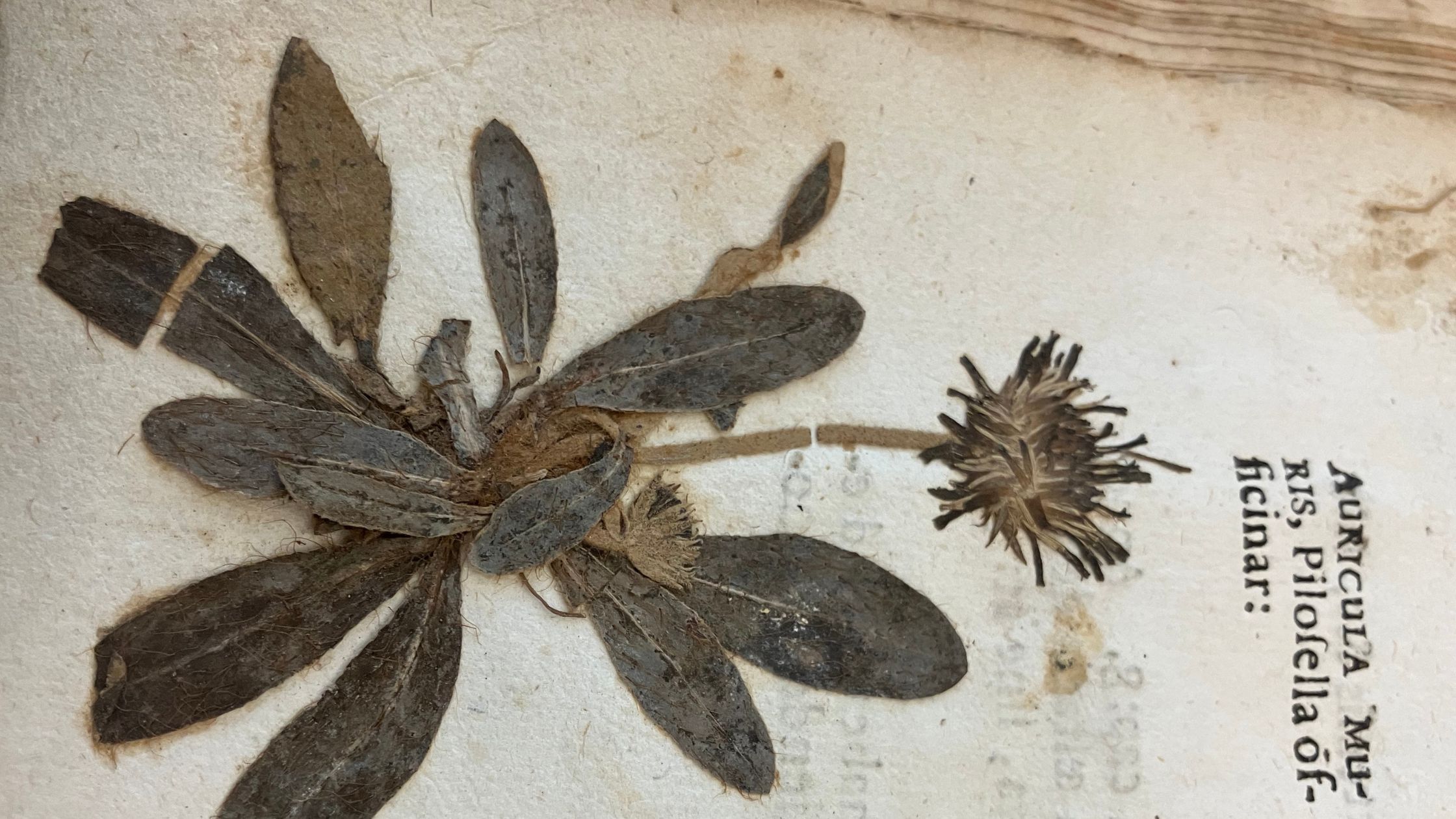I chose to adopt Specimen medico-pratico-botanicum, seu brevis & dilucida explicatio virtutum plantarum & stirpium indigenarum, in officinis Pharmaceuticis qvam plurimum usitatarum, atqve juxta ordinem, ut vocant, alphabeticum, prout in Regio Botanico horto Hasniensi inveniuntur, dispositarum, in gratiam Botanophilorum atqve usum Medicum concinnata.
[translation from Latin: A medical-practical-botanical specimen, or a brief and clear explanation of the virtues of indigenous plants and breeds, which are most commonly used in pharmaceutical workshops, arranged in alphabetical order, as they are found in the botanical garden of Hasniensi, for the favor of botanists and medical use]
For brevity I will refer to it as Specimen Botanicum, which appears on the spire.

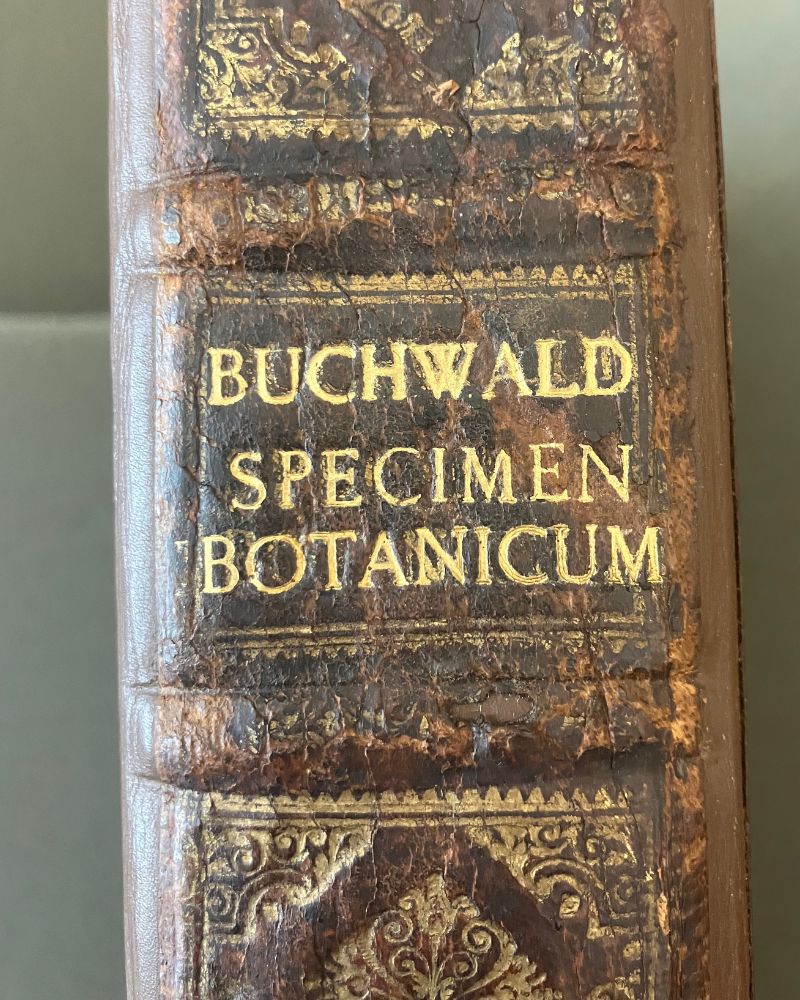
Specimen Botanicum is an herbarium specimen book created by Danish doctor Johannes de Buchwald in 1720. A catalog of medicinal plants found in the royal/university botanical garden, the book includes dried plants pressed and pasted between its pages for reference.
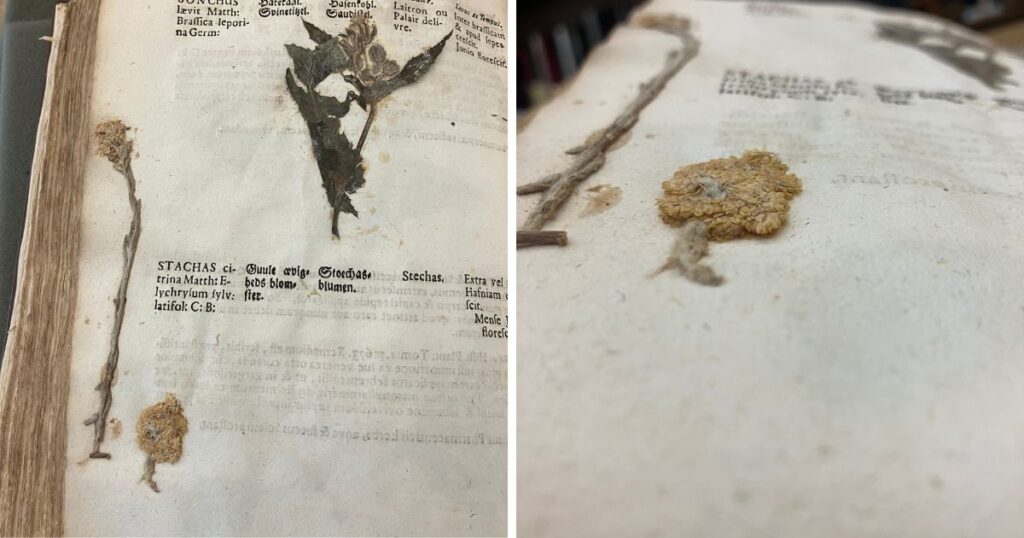

Specimen Botanicum was rebound at some point after it was donated to Wesleyan in 1842. There is a significant difference in the color and texture of the endpapers compared to the interior signatures that make up the bulk of the book. The papers also differ in size.
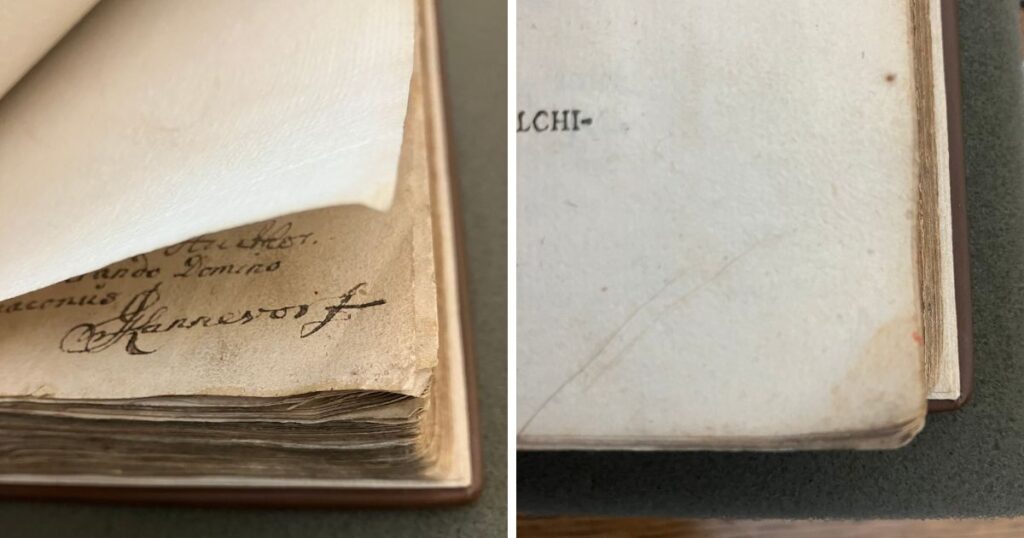
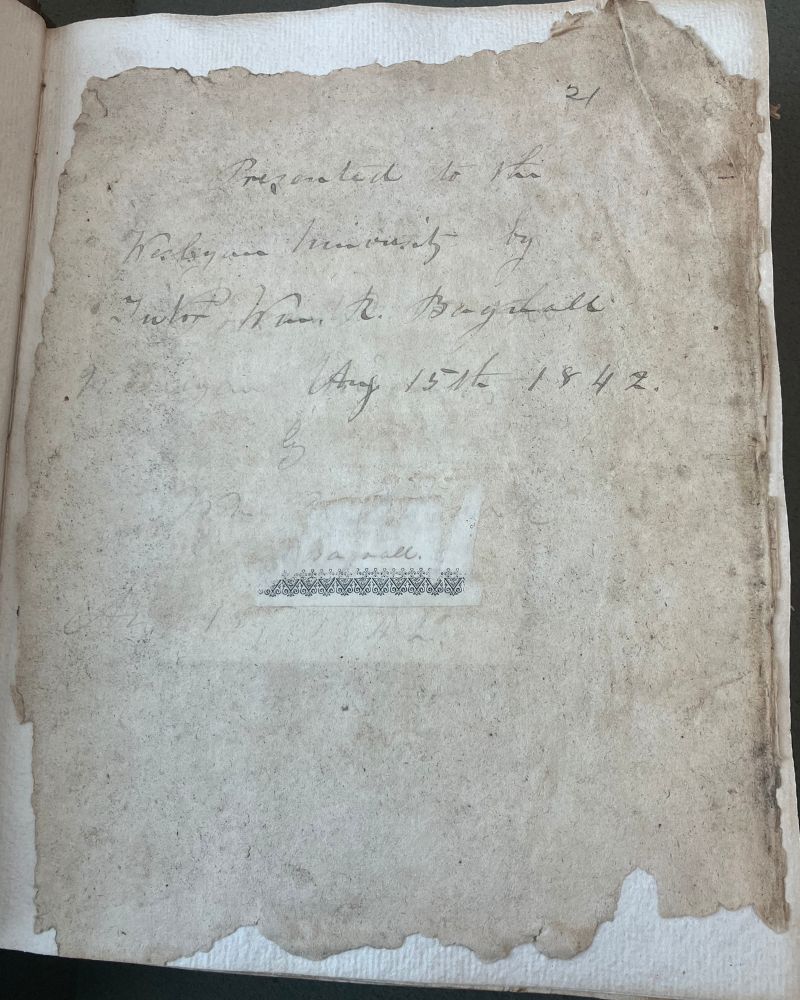

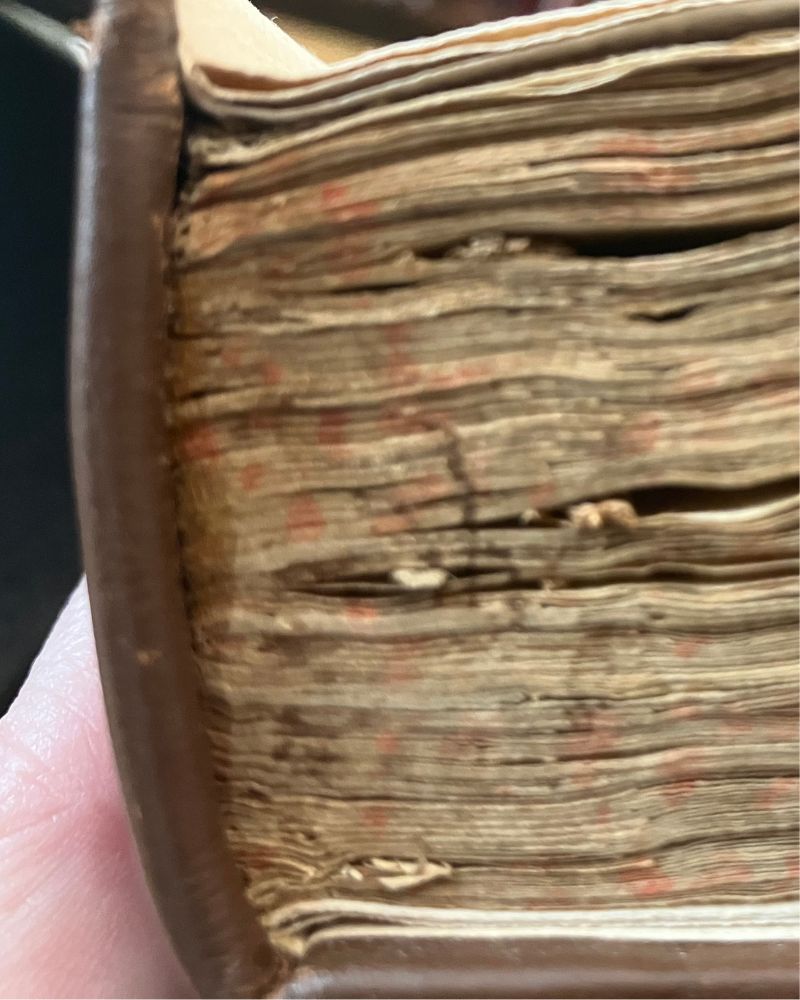
There are two inscriptions written on the endpapers at the beginning of the book. The first is an inscription to Wesleyan, written in pencil and dated August 15, 1842. The paper is no longer attached, but pasted onto the newer papers added during the rebinding. The second inscription is in ink and dated 1757, 17, April. This earlier inscription was written on the first page that is original.
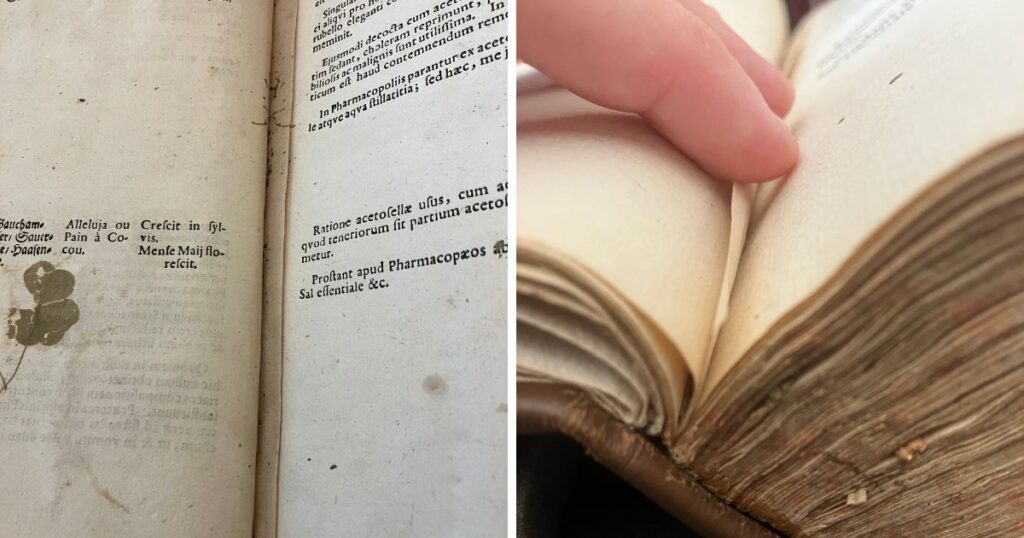
Specimen Botanicum contains thirty-eight signatures of eight pages in a quarto format. At least that is my best guess given the dimensions and the number of pages and signatures. Throughout the book there is evidence that a page was cut down (see images above), but there is no easily identified pattern to this. There is also one particularly odd case where a piece of paper is stuck between two pages (see left image below). The extra paper is printed like the rest of the book and thus appears to be a part of it, but is not obviously connected to the surrounding pages. This piece of page is not loose, but — most likely accidentally — is part of the (re)binding. In all these instances, the numbering is not affected by the missing or additional page.
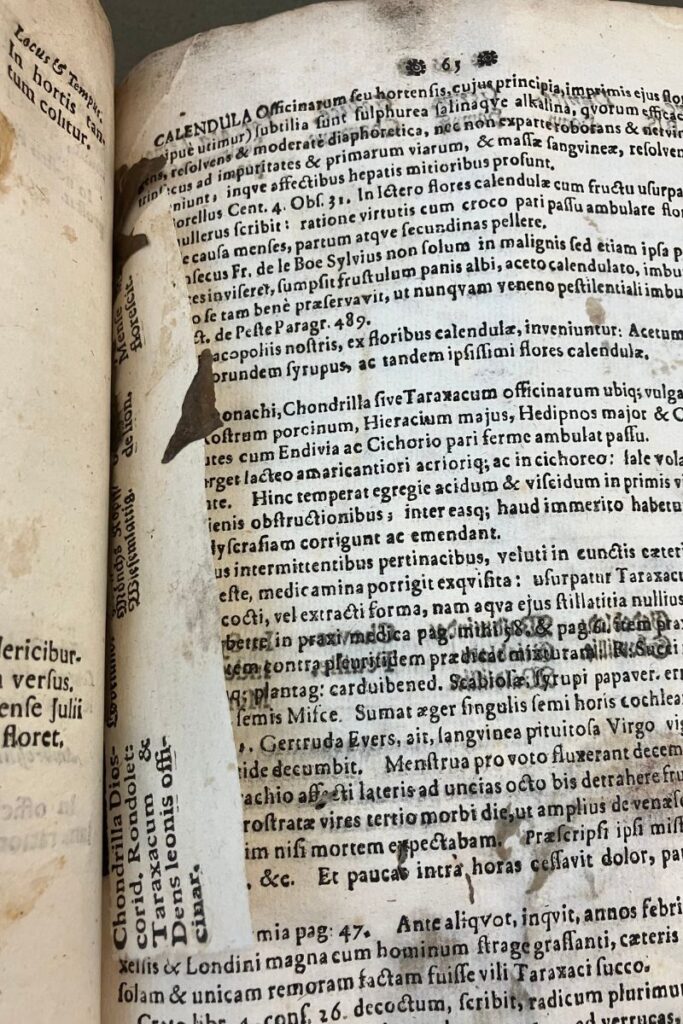
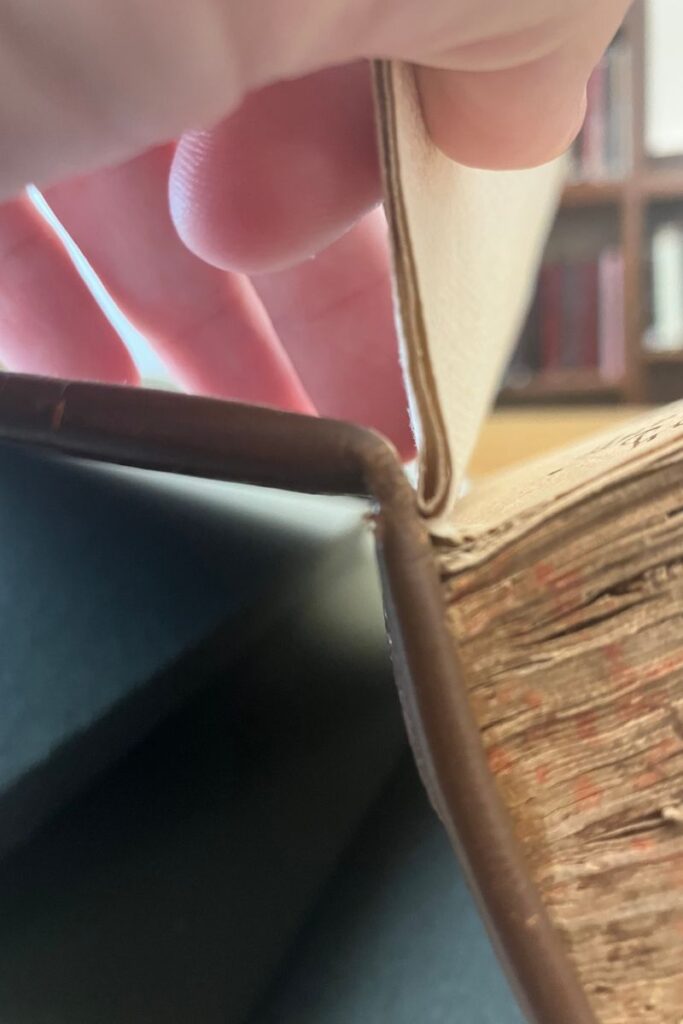
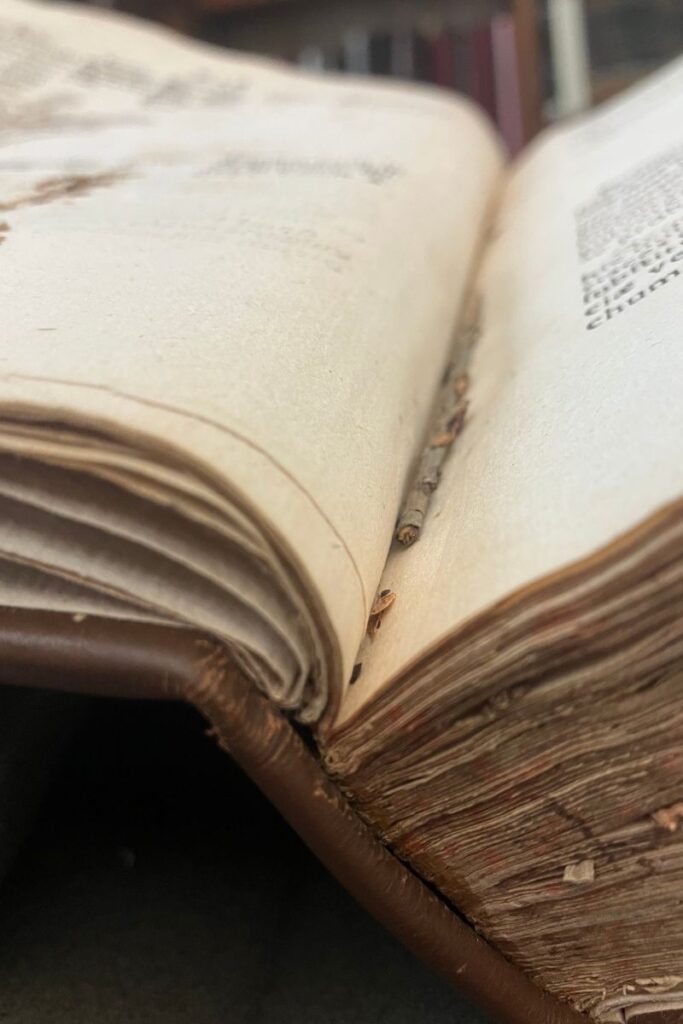
In some instances these signatures appear to be collected into further gatherings of two or three signatures. It is unclear to me if these gatherings were deliberate. It’s possible the delineations are a natural result of the differing weights and curves of the pages and signatures due to the various specimens mounted on the pages. The specimens vary in width, depth, and heft, and over the years some were cracked or dislodged and part or all of the plant fell into the gutter between the pages.
There is a significant amount of natural wear to the pages, as well as damage to and from the specimens. I find these damages just as interesting and beautiful as the specimens themselves.
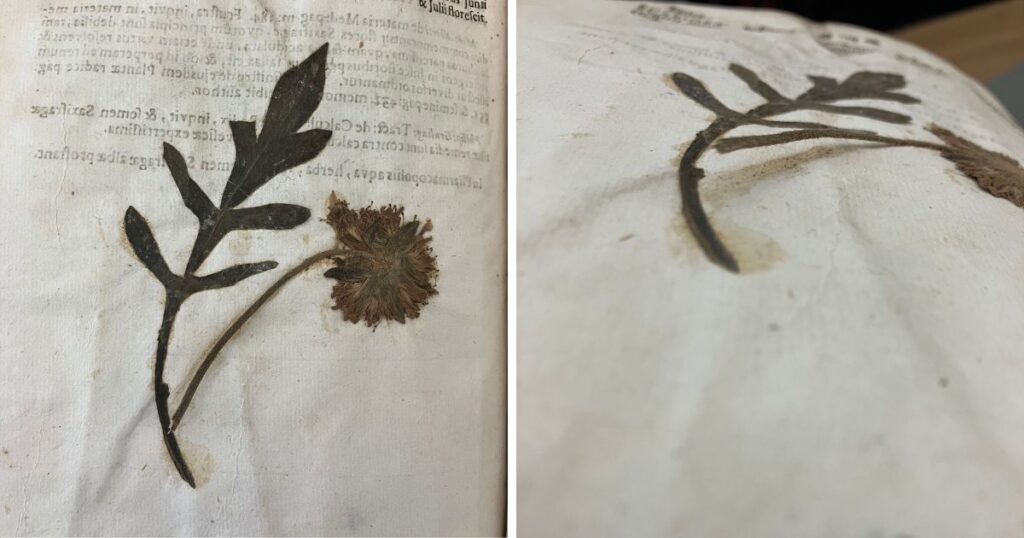
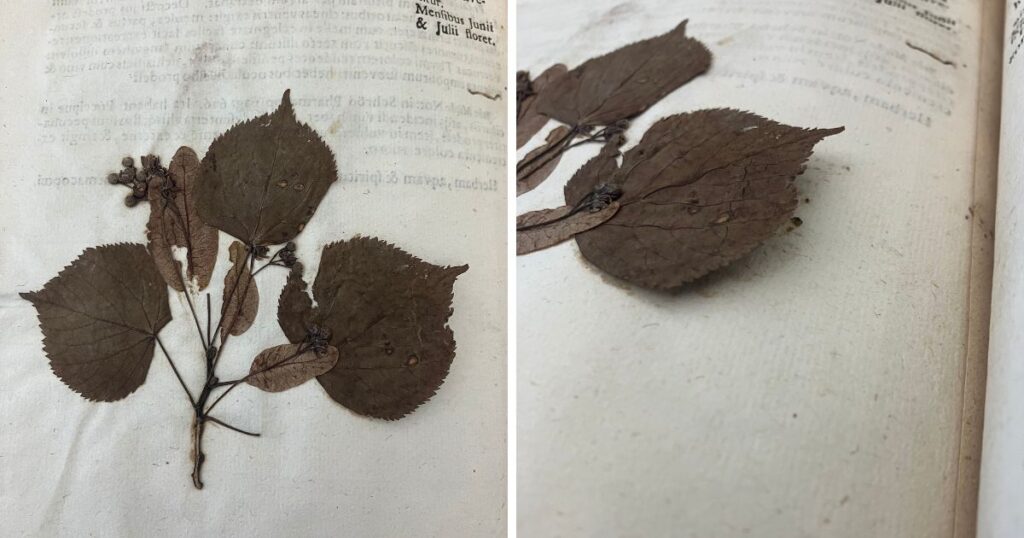
Here are examples of specimens that came loose from the page.

In this case a piece of the specimen broke off and now resides in the gutter of the pages.
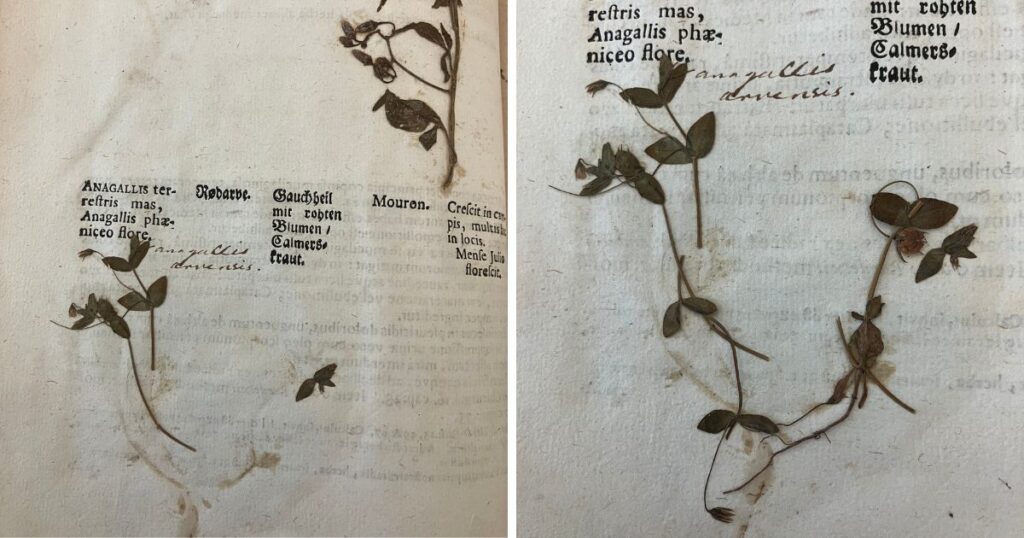
The remaining paste outline makes it easy to reconstruct the specimens even now three hundred years later.
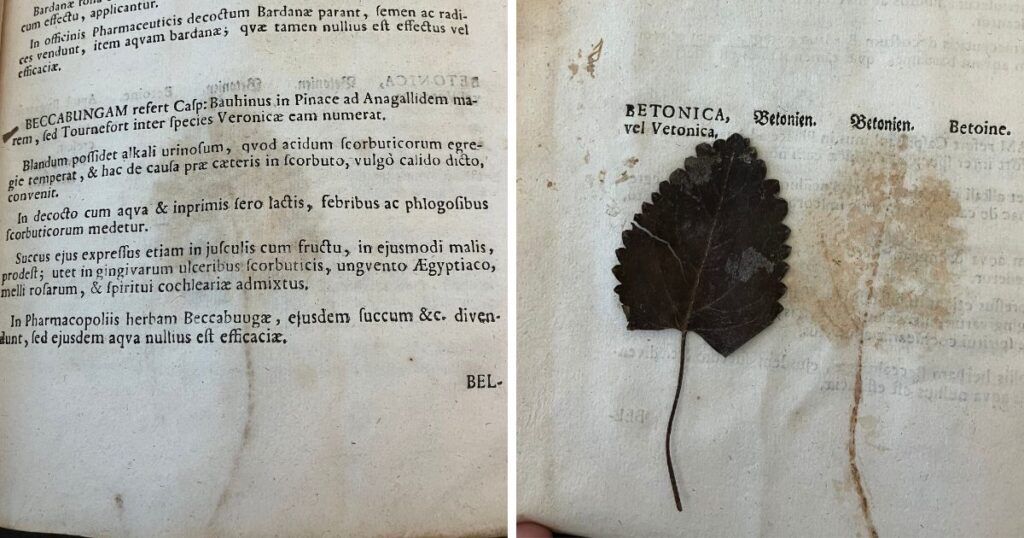
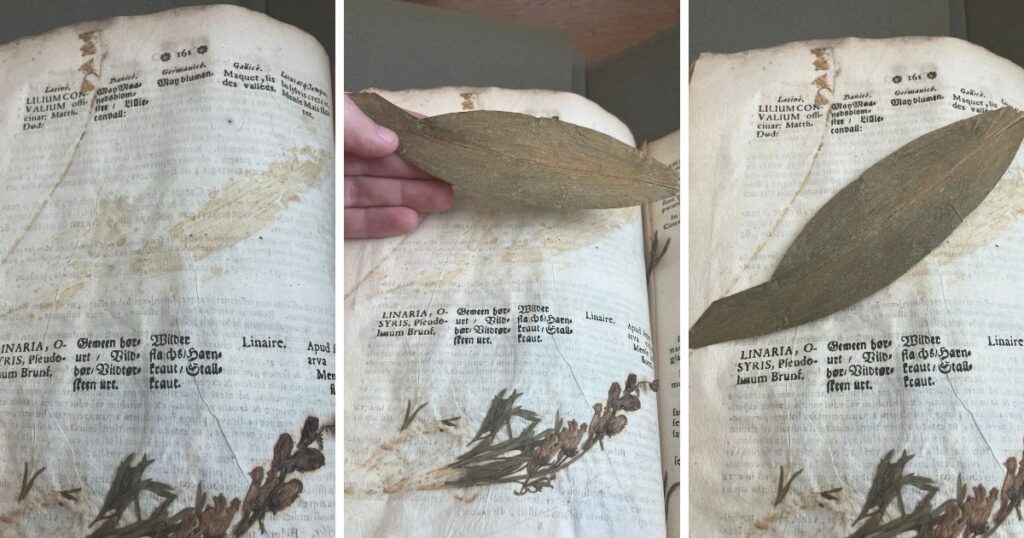
These specimens were fully dislodged from the pages of the book, but remain remarkably intact.
Finally, there is damage from paper-eating bugs. There are holes throughout, displayed in the images below.
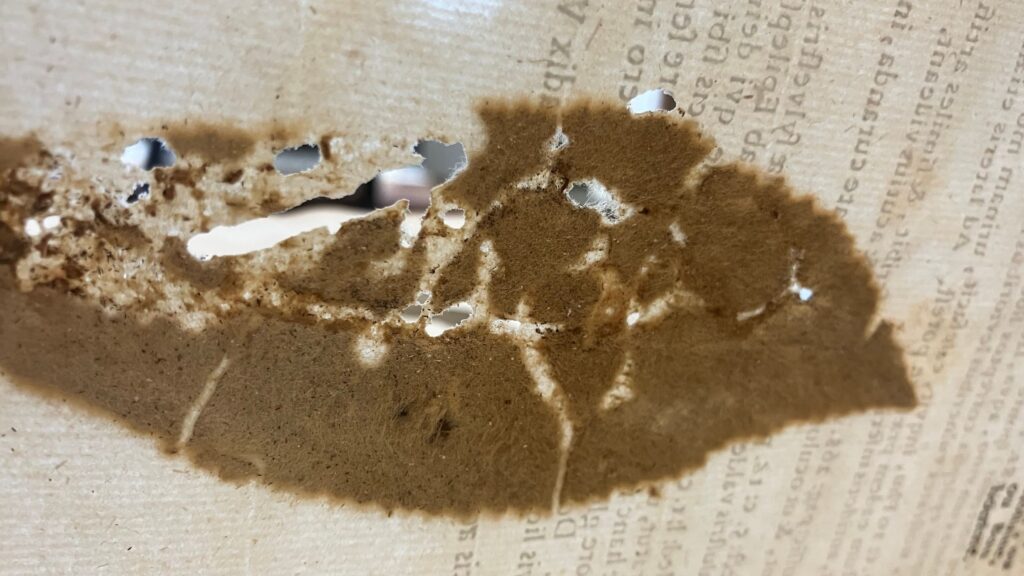

The specimen on the left is significantly degraded and in this case it looks like the bug ate the leaf as well as the paper. In the right image there is only the one hole, with the specimen otherwise intact, which suggests the bug was more interested in the paper than the plant. These two pages were held up to show off the holes, but with the light shining through them, I can also identify the paper as laid.
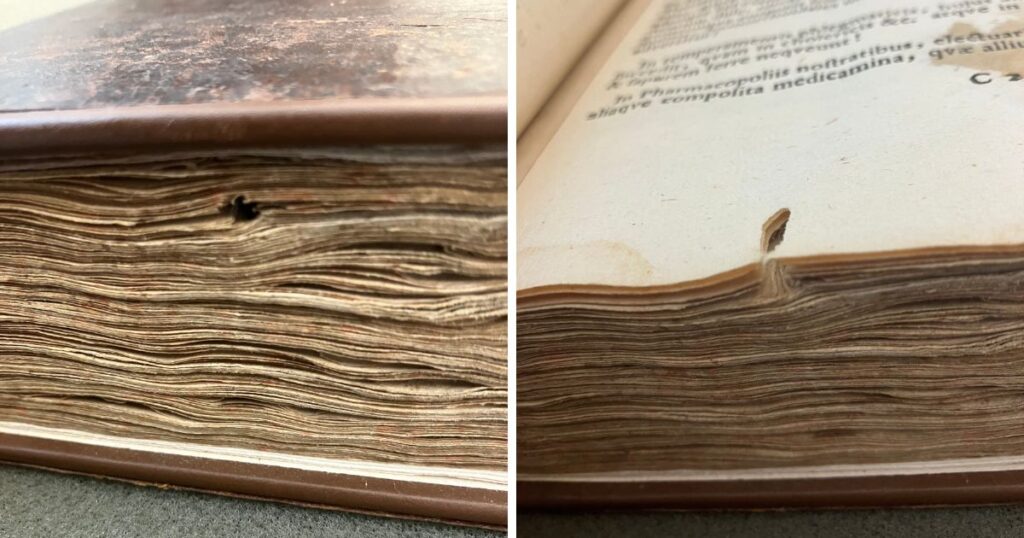
Here you can see evidence of a bug from the exterior of the book. This bug’s contribution first appears on page 17 and continues through page 46. The hole splits the edge of the page starting on page 19.

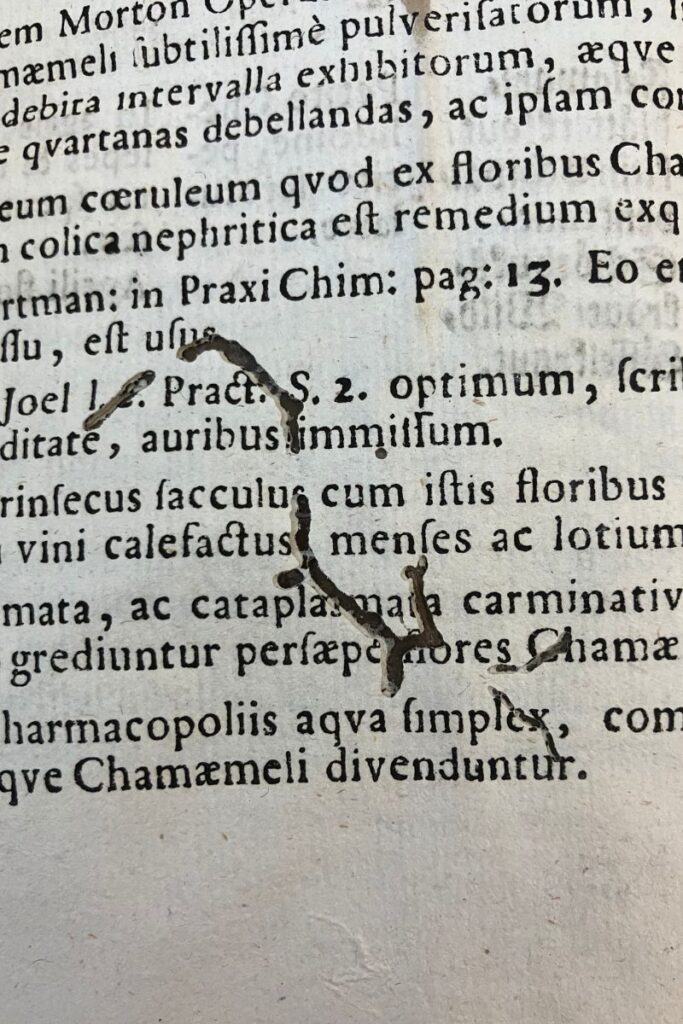
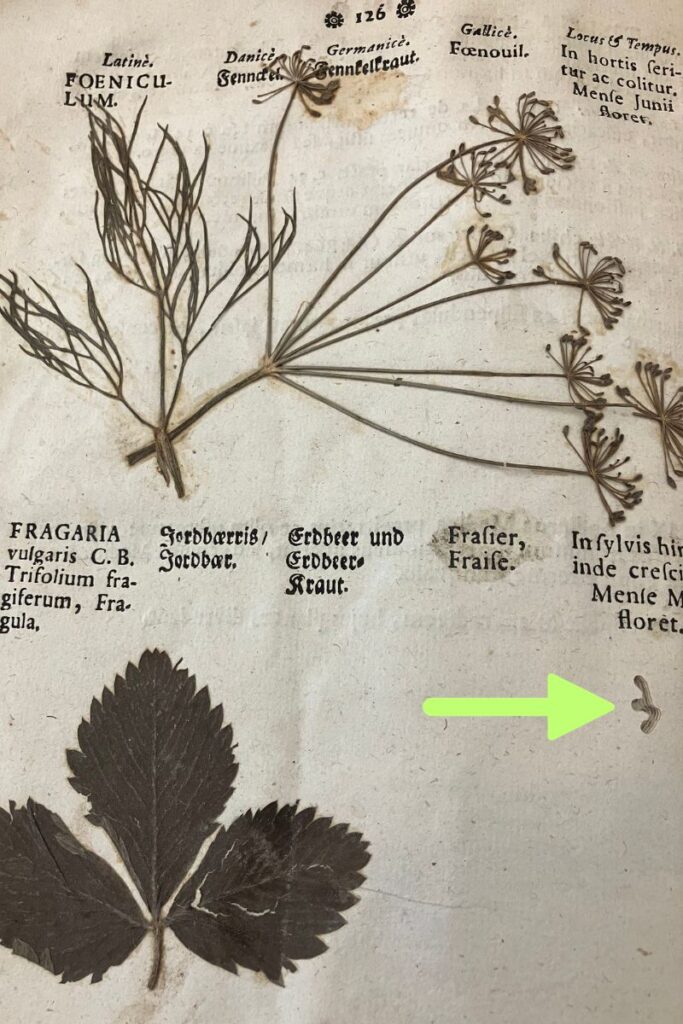
This very interesting damage is visible pages 63 through 82. The first two images above show the design (as it were) from both angles (sides). There are smaller related holes on pages 83 to 114, and then it becomes a partial squiggle again pages 115 to 128. An example of this is indicated by the green arrow in the the right image above.

I choose to consider this book illustrated although there are only a handful of images included with the printing or sketched in pencil. The text is a catalog: the name and description of a plant and its potential medicinal properties. The specimens are included to clarify those labels, as an example of what to look for in the wild. And from my perspective, the specimens are not only illustrative, they are also art. The pieces of this book are broken and messy and at times incongruous. But I love its warped pages and paste stains, its random pencil sketches and three hundred year old flowers, and the pet bug that lived in my pet book.
Physical Description: [8] 320 pages : ill. ; 24cm (4to)
Signature statement: a4 1-388 a4
Material Description: Printed on laid paper with pressed specimens pasted to the pages. Endpapers added when re-bound in leather with gold tooling. 24 cm l. x 19 cm w. x 5 cm d. There is significant wear due to age, humidity, and bugs. Some specimens are missing or damaged. Includes two inscriptions, and a handful of pencil sketches throughout.

